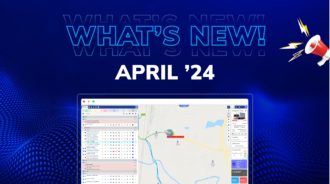Introduction
In the realm of transportation and fleet management, ensuring safety and efficiency is paramount. A critical tool that has emerged to aid in this endeavor is driver monitoring. This technology, designed to assess, manage, and improve driver behavior, has become an indispensable asset for fleet operators worldwide. This blog delves into the intricacies of driver monitoring, exploring its mechanisms, benefits, and its pivotal role in modern fleet operations.
What is Driver Monitoring?
Driver monitoring is a technology-based system aimed at continuously observing and evaluating a driver’s behavior and performance. It leverages various sensors and analytics tools to detect signs of fatigue, distraction, and other risk factors that can lead to accidents. By providing real-time feedback and comprehensive reports, driver monitoring systems help enhance safety, efficiency, and compliance with driving regulations.
The Need for Driver Monitoring
The advent of driver monitoring isn’t a matter of convenience; it’s a crucial response to a growing need. Road accidents, often due to human error, lead to tragic losses and significant economic costs each year. Driver monitoring serves as a proactive measure to reduce these incidents by identifying risky behaviors early on and intervening accordingly. Furthermore, for fleet operators, this technology is invaluable for managing a large number of vehicles and drivers, ensuring they adhere to safety standards and operate efficiently.
Components of Driver Monitoring Systems
Driver monitoring systems typically comprise several components working in harmony:
- Sensors and Cameras: These are installed inside the vehicle to detect various parameters like eye movement, head position, and driving patterns.
- Data Analytics: The collected data is analyzed to assess the driver’s alertness, focus, and driving style.
- Feedback Mechanisms: Drivers receive real-time alerts and feedback based on the analysis, prompting them to correct risky behaviors immediately.
The Role of Driver Monitoring Software
At the heart of any driver monitoring system is its software. This software interprets data from the vehicle’s sensors and cameras, using sophisticated algorithms to detect signs of fatigue, distraction, and irregular driving patterns. It can then provide immediate feedback to the driver, as well as compile long-term reports for fleet managers to review and act upon.
Advantages and Benefits
The advantages of driver monitoring are manifold:
- Enhanced Safety: By reducing risky driving behaviors, the likelihood of accidents is significantly diminished.
- Improved Compliance: It ensures drivers adhere to road safety laws and driving hours regulations.
- Cost Savings: Fewer accidents mean lower costs related to vehicle repairs, insurance, and legal proceedings.
- Increased Efficiency: By monitoring driving patterns, fleet operators can optimize routes and reduce fuel consumption.
- Data-Driven Insights: Long-term data provides valuable insights for training and rewarding drivers.
How Driver Monitoring Software Works
Driver monitoring software operates on a simple yet powerful principle: observe, analyze, and act. It continuously observes the driver using sensors and cameras. The data is then analyzed to detect any deviations from safe driving norms. If a risk is detected, the system acts by alerting the driver and, in some cases, even taking control of the vehicle to prevent accidents.
Understanding the Basics
Firstly, driver monitoring software is a sophisticated system that uses sensors and cameras to observe and analyze driver behavior. These systems often integrate into a vehicle’s hardware and continuously work while the vehicle operates.
How It Watches Over
Capturing the Scene: Cameras positioned inside the vehicle capture real-time video. These aren’t just any cameras; they’re high-tech, capable of detailed analysis. They monitor eye movements, facial expressions, and even body posture to assess the driver’s alertness and focus.
Sensing the Unseen: Besides visual cues, sensors play a crucial role. They detect physical inputs like steering wheel movement, acceleration, and braking patterns. This helps in understanding the driver’s interaction with the vehicle.
Analyzing for Safety
Once the data is captured, it’s time for analysis. Sophisticated algorithms come into play, examining the collected information to determine the driver’s state. Are they focused, drowsy, or distracted? The software swiftly makes this assessment.
Responding in Real Time
Here’s where it gets even more impressive. Upon detecting any risk, such as signs of drowsiness or distraction, the system reacts. It might issue alerts, ranging from auditory signals to vibrating seats, nudging the driver back to attention. In more advanced systems, it can even take control of the vehicle to prevent accidents.
Continuous Learning
Moreover, driver monitoring software isn’t static. It learns and adapts. By analyzing long-term patterns, it can offer personalized feedback, helping drivers understand and improve their habits.
How fleet operating business can benefit from our driver monitoring software:
Unlocking Efficiency with Driver Monitoring
In the fast-paced world of fleet management, staying ahead means embracing technology. Driver monitoring software stands out as a pivotal tool. This intelligent solution promises not only to streamline operations but also to ensure safety. Let’s dive into how this technology benefits users.
Real-Time Insights for Immediate Action
Imagine having eyes on every vehicle, all the time. Driver monitoring software offers real-time insights, alerting you to behaviors like speeding or harsh braking. This isn’t just about reprimands; it’s about immediate corrections, guiding drivers towards safer practices.
Preventing Accidents Before They Happen
Accidents aren’t just dangerous; they’re costly. By monitoring driving patterns, the software predicts and prevents potential mishaps. It’s like having a co-pilot in every vehicle, one that’s always vigilant and always ready to guide drivers to safety.
Cutting Costs, Not Corners
Fuel and maintenance are hefty line items in any fleet’s budget. Driver monitoring software helps reduce these costs by promoting efficient driving habits. Less idling, optimal speed, and preventive maintenance schedules mean more money stays in your pocket.
Boosting Driver Accountability and Morale
When drivers know they’re being monitored, accountability rises. But it’s not just about oversight; it’s about empowerment. Drivers receive feedback and training, helping them become safer and more efficient. It’s a win-win, enhancing their skills and your company’s reputation.
Simplifying Compliance and Reporting
Navigating the maze of regulatory compliance is no small feat. Driver monitoring software automates much of this process, ensuring you’re always on the right side of the law. Plus, with easy-to-generate reports, you’ll have all the data you need at your fingertips.
Embracing a Culture of Safety
Ultimately, adopting driver monitoring software isn’t just a business decision; it’s a commitment to safety. It fosters an environment where every driver is aware, engaged, and equipped to make the best decisions. That’s not just good for business; it’s good for everyone on the road.
For Fleet Operators and Management Companies
For fleet operators and management companies, driver monitoring is a game-changer. It allows for the management of large fleets with improved oversight and control. By understanding the behavior of each driver, fleet managers can tailor training programs, schedule drivers more effectively, and improve overall fleet performance. The insights gained from monitoring can lead to better decision-making and a healthier bottom line.
Conclusion
In the fast-paced world of transportation, driver monitoring stands as a sentinel of safety and efficiency. By harnessing the power of technology, it provides a proactive solution to the perennial challenges of road safety and fleet management. As we move forward, the role of driver monitoring is set to expand, becoming an integral part of the driving experience and a critical tool for fleet operators worldwide. Whether you’re a driver, a fleet manager, or a concerned citizen, understanding and advocating for driver monitoring is a step towards a safer, more efficient future on the roads.



